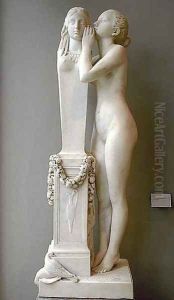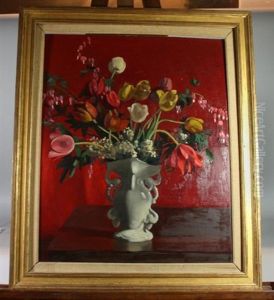Francois Jouffroy Paintings
François Jouffroy was a prominent French sculptor who played a significant role in the art world during the 19th century. Born on February 1, 1806, in Dijon, France, Jouffroy's talent in the arts became evident at an early age. He went on to study at the École des Beaux-Arts in Paris, which was the most prestigious art school in France at the time. Under the tutelage of renowned sculptors such as Pierre-Jean David d'Angers and James Pradier, Jouffroy honed his skills and developed his own distinctive style.
Jouffroy's works are characterized by their neoclassical style, which was prevalent in the early to mid-19th century. This style emphasized grace, clarity of form, and idealized beauty, drawing inspiration from the classical art and culture of Ancient Greece and Rome. Jouffroy's sculptures often featured mythological and historical subjects, and he was particularly adept at capturing the human form with a delicate sense of emotion and fine detail.
One of Jouffroy's most famous works is the sculpture 'Fillette à la coquille', which exemplifies his ability to portray innocence and charm in his subjects. His other notable works include 'Madeleine' and 'Faune jouant avec un chevreau' (Faun Playing with a Kid), both of which further cemented his reputation as a master sculptor.
In addition to creating his own works, Jouffroy also contributed to decorative projects on notable buildings in Paris, such as the Palais du Louvre and the Palais du Luxembourg. His success and influence in the art world led to his appointment as a professor at the École des Beaux-Arts, where he taught and inspired the next generation of French sculptors.
François Jouffroy's contributions to French sculpture were recognized with numerous honors, including being made an Officer of the Legion of Honor, one of France's highest awards. He continued to sculpt and teach until his later years, passing away on June 25, 1882, in Paris. His legacy lives on through his works, which continue to be admired for their technical proficiency and emotional depth, and through the many students he mentored, who carried forward the traditions of French sculpture.

